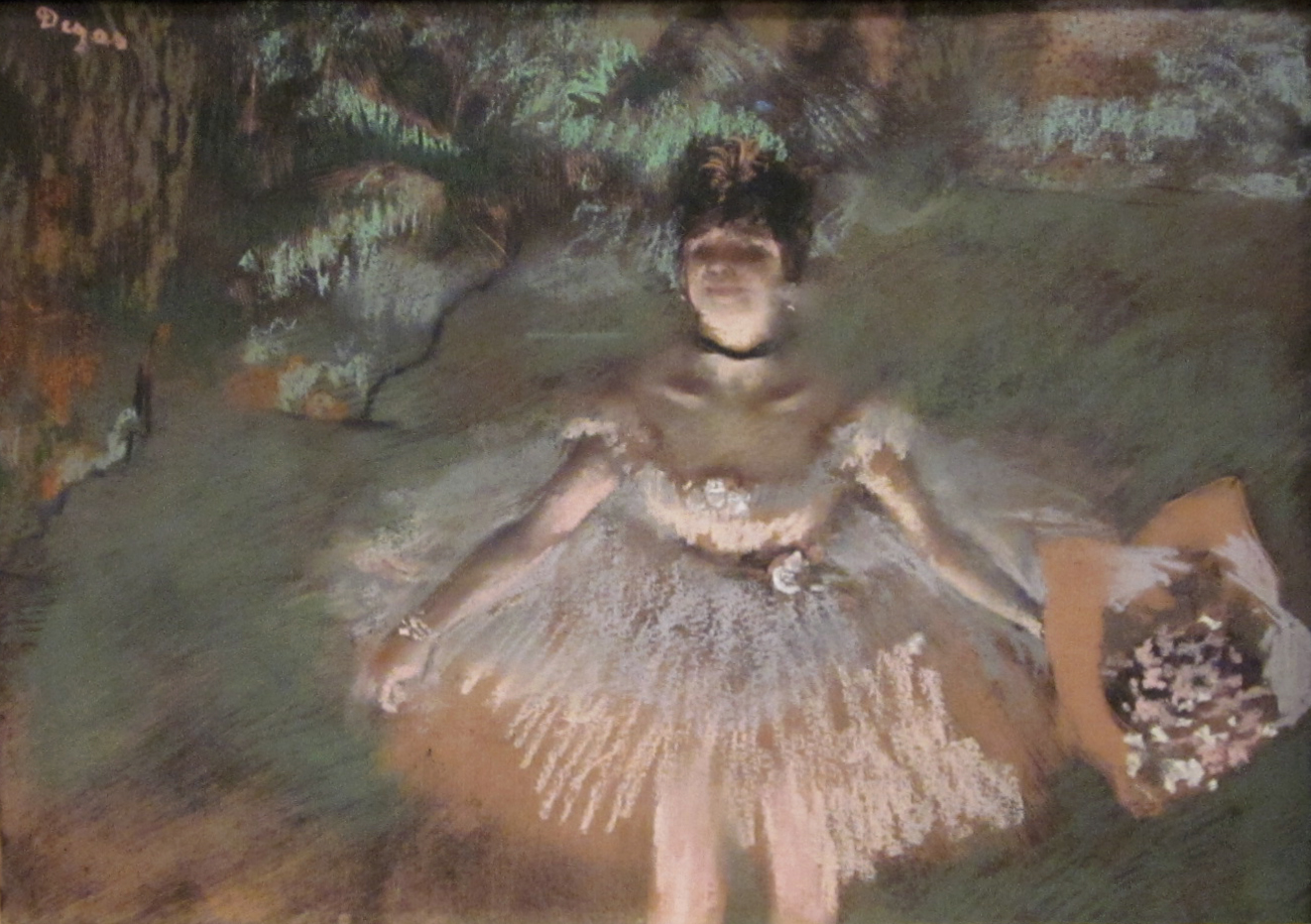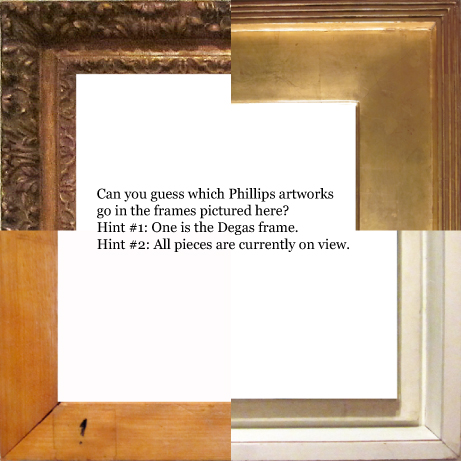Do you have a favorite Phillips frame? Paul Klee’s handmade frames, preserved at the Phillips under secondary shadowbox frames, first came to mind for Paintings Conservator Patricia Favero, who was quick to add that she has many other favorites.
Many–if not most–of the artworks owned by the Phillips are displayed in frames. I’d venture to guess that viewers spend less time considering a frame than the work it surrounds, and that artists (and curators) prefer it that way. Frames serve the functional purpose of protecting a painting or a work on paper and also act as a support by which pieces can be mounted to a wall. Nevertheless, frames are carefully designed and selected to complement the art they hold.
Dancer onstage with a Bouquet (c. 1876), a small but difficult to miss piece in the museum’s current exhibition Degas’s Dancers at the Barre: Point and Counterpoint features a frame made by Degas himself.

Edgar Degas, Dancer Onstage with a Bouquet, c. 1876. Pastel over monotype on laid paper, 10 5/8 x 14 7/8 inches. Private Collection
It is quite interesting to observe how the design of the frame differs from the frames that surround the other works in the exhibition. Favero, who retouched the Degas frame to prepare it for display at the Phillips, said that ordinarily an artwork’s frame is chosen by a dealer, curator, or private collector. Interjecting her own opinion on the matter, she added “[frames] can add or take away from the work.”

Can you guess which Phillips artworks go in the frames pictured here? Hint #1: One is the Degas frame. Hint #2: All pieces are currently on view.
Click through the links below to see how your memory fared!
Upper left
Upper right
Bottom left
Bottom right
–Piper Grosswendt, Museum Assistant/Marketing Intern

Thanks. I liked your Frame Game. Only got two right myself, but I do notice frames. In addition to The Phillips, another great venue to study frames is the American section at The Freer. Whistler paid a great deal of attention to frames, and there are at least two at The Freer that he designed himself, the frame for “Caprice in Purple and Gold” and the one for ‘Harmony in Blue and Gold,” the latter on which Whistler “signed” the frame with his signature butterfly. The Freer also has many incredible frames designed by the architect Stanford White of McKim, Mead & White, the firm that I believed designed a section of the beautiful Phillips building If you are into frames, a great book is “”The Art of the Frame” by Eli Wilner, which I often browse but have not yet bought; it’s a bit pricey. Thanks again.
Thanks for that fabulous game! I have a passion for frames and I really liked the game!
Thanks a lot.